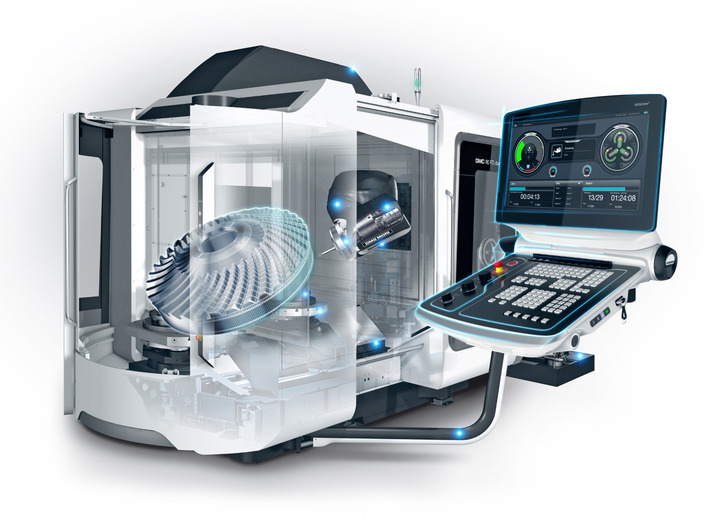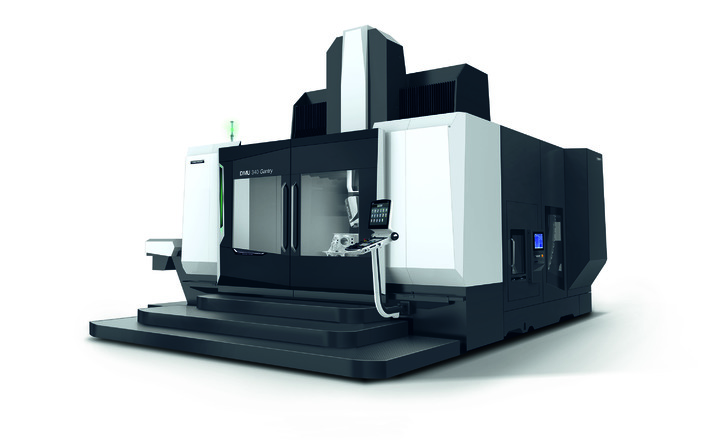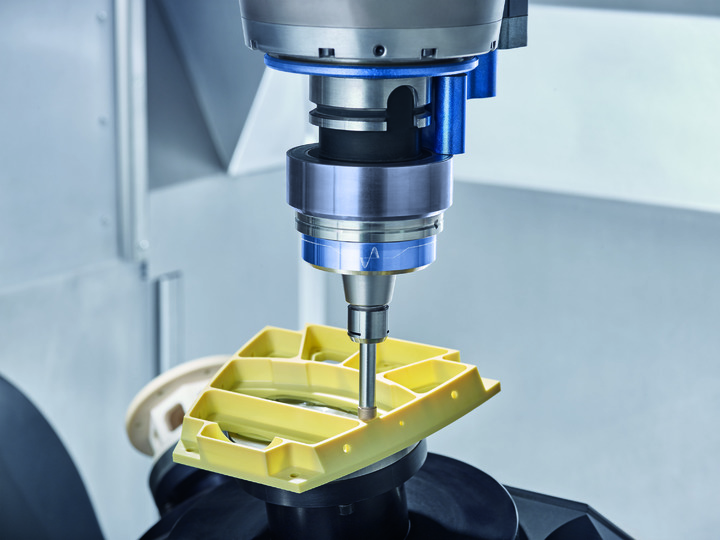AMRC prepares to go ultrasonic with arrival of new composite machine tool
05 September 2018The world's largest ultrasonic assisted machine tool is coming to the University of Sheffield Advanced Manufacturing Research Centre, cementing the AMRC’s reputation for world-leading research capabilities in composite machining.
The £1.8m DMU 340 G linear machine tool arrives at the AMRC at the end of the year and will be the first of its size to be fitted with an ultrasonic-capable spindle for use in five-axis machining applications.
The specification for the machine – which has a 59 sqm footprint - has been tailored and developed with the input of Dr Kevin Kerrigan, the lead for the Composites Machining Group at the AMRC Composites Centre, helping DMG Mori create a product it is able to market to the world.
The DMU 340 G is capable of providing significant improvements in composite machining, ranging from high-end luxury vehicle monocells to next-generation aeroengine lightweight fan blades. It is also capable of titanium drilling and finishing operations and working with materials of the future such as glass fibre reinforced aluminium, a glass fibre in a resin laminate interspersed with sheets of aluminium and an array of high-temperature composite materials.
The machine boasts many other features including linear motors for high accuracy and rapid motion, novel dust extraction technology, high pressure cutting fluid delivery systems, on machine inspection technology, and a multitude of industry 4.0 capabilities including wireless in-process monitoring and control technologies, enhanced connectivity and plug-in technologies to interface with the AMRC’s vast data analytics suite.
Project proposals are already in the pipeline and the machine will have applications for companies like McLaren, Roll-Royce, The Boeing Company, BAE Systems and Airbus. It also opens up opportunities in the renewables, medical and construction sectors.
On securing the machine, Kevin said: “This machine is the first of the DMU 340 G product range to have the ultrasonic assisted machining kit. It cements the AMRC’s reputation for world-leading research for capabilities in composite machining.”
The advantage of the machine’s ultrasonic capabilities is that the high frequency movements – 40,000 micro-movements per second – bring a higher degree of control of chip formation and heat within the system. The result is less damage, less waste and a better finish – which is why the technology is suited to machining hard, abrasive, brittle material like carbon fibre composites, alloys and CMCs.
Kevin said: “The ultrasonic assisted machining process is basically the same as a standard rotatory cutting tool operation, but with an added highly tuneable, micro-scale, axial motion of the cutting tool providing a secondary motion during cutting.
“It is the additional movement that has the ability to control the amount of energy supplied into the cutting interface affecting the amount of thermal energy and fracture energy associated with the process.
“The incoming machine also has linear drives which create better acceleration and change of acceleration, i.e. jerk, to push the machine really fast during 5-axis tool paths which helps when producing complex shapes at high rate whilst retaining part geometric accuracy. With this linear drive system, the machine can get up to feed rates of 90 m/min. Current feed rates, between 1 and 4 m/min, are mostly driven by the fact that the forces generated during cutting, even with rpms of over 20,000 rpm, would snap the tools if feed rates got any faster. That is a massive difference and a huge benefit to productivity.”
The machine is digital ready – kitted out with an intelligent, customisable controller that allows the machine to integrate process-monitoring techniques, providing data that can not only measure performance but also help to improve tool life.
Kevin said: “The usefulness of this is really on the process monitoring side of things. The 840D controller is considered state-of-the-art for enabling the extraction of process information, enabling machine health monitoring, shop floor connectivity and closed-loop adaptive control. It can also link to additional live retrofit process measurements that are linked to things like tool wear, damage defects on a part.
“That’s useful information that gives us greater insight into the machining operations being undertaken on complex materials.”



